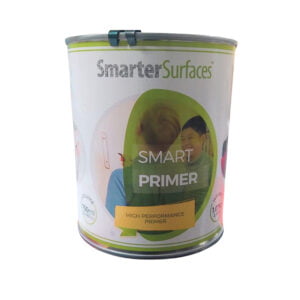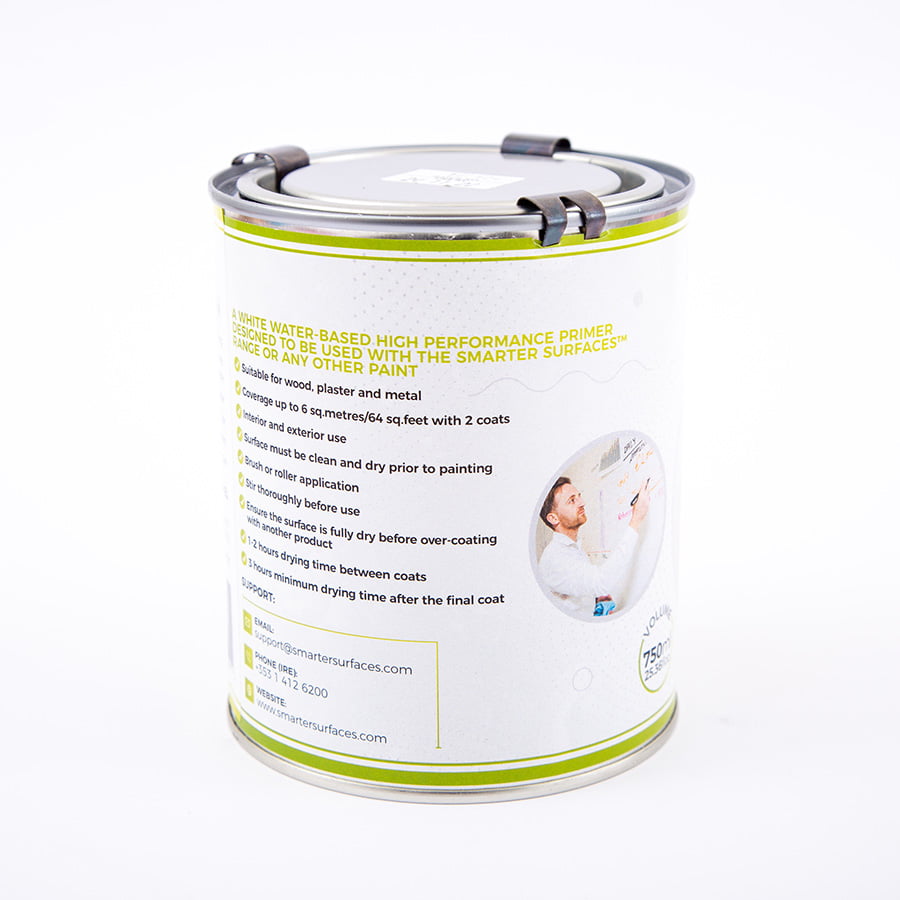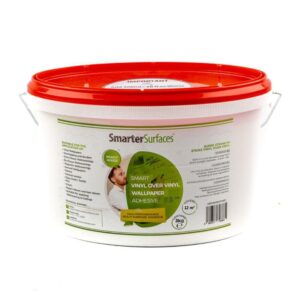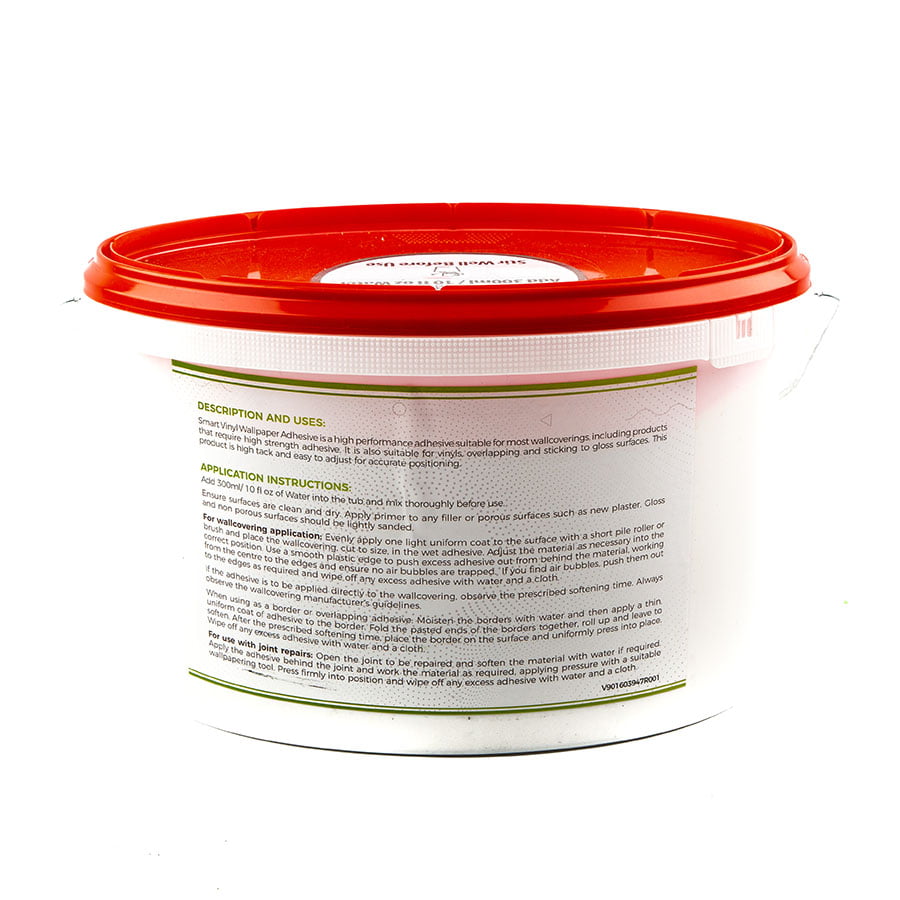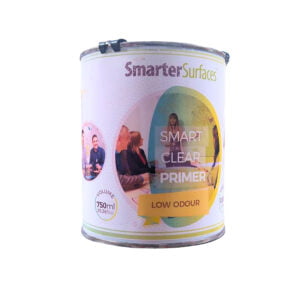Home - Primers & Adhesives
Primers and Adhesives for Whiteboard Surfaces and Walls
At Smarter Surfaces, we provide high performance white and clear primers, along with a specialized high-strength vinyl-over-vinyl adhesive, to ensure the best results in your surface transformation endeavours.
Smart White Primer
From CAD$42.00 Select options This product has multiple variants. The options may be chosen on the product pageSmart Vinyl over Vinyl Wallpaper Adhesive
CAD$65.00 Select options This product has multiple variants. The options may be chosen on the product page
Specialist Solutions for Preparing Surfaces for Paint and Wallpaper
- White Primer: Our premium easy sanding white primer is known for its high opacity, it delivers a consistent and opaque white foundation, making it ideal for projects that involve whiteboard and magnetic paints. This primer guarantees a smooth, well-covered finish, enhancing the performance of the final surface and achieving a professional-quality result.
- Clear Primer: Crafted to preserve the original colour and look of a surface, our clear primer prepares the area for the application of whiteboard or magnetic paints without altering their visual appeal. It ensures smooth adherence while maintaining the desired design and aesthetics of the environment.
- Vinyl-Over-Vinyl Adhesive: Designed for the installation of whiteboard wallpapers and heavier materials, this high-performance adhesive provides a robust and long-lasting bond between existing vinyl surfaces and newly applied wallpaper. It is effective on challenging surfaces like glass and composite materials, ensuring durability and stability for writable wall applications over time.
FAQ's
To ensure optimal primer adhesion, it is crucial to thoroughly clean the surface, eliminating any dirt, dust, and other impurities. For surfaces with a glossy finish, light sanding is advisable to create a textured area that promotes primer adherence. Also, the surface must be completely dry before primer application to guarantee its effectiveness.
Applying primer is a vital step when using white dry erase paint, particularly on porous or dark surfaces. The primer creates a smooth, sealed base, enhancing paint adhesion and ensuring a consistent, high-quality finish. However, for transparent or clear whiteboard paint, a clear primer is only necessary when applying the paint to porous surfaces.
The cleaning procedure should commence with the elimination of dirt, grease, and dust utilizing a gentle detergent. Any cracks or flaws must be fixed before moving forward. The surface should be lightly sanded to guarantee smoothness and must be completely dry before initiating the priming stage.
A standard primer serves as a preparatory layer applied to surfaces before painting. On the other hand, a surface primer is formulated to bond with various materials, such as plastic, metal, and wood, thus offering an enhanced base for the subsequent topcoat application.
The process starts with a comprehensive cleaning of the board, followed by light sanding to achieve a smooth finish. A coat of primer should then be applied using a brush or a roller. For optimal results, a second coat is advisable after the first layer has dried to ensure even coverage before moving on to the painting phase.
No, it is not advisable to use white paint instead of primer. Primer is designed to bond well with surfaces, seal imperfections, and create a consistent base for paint application. These tasks cannot be performed by standard white paint.
Neglecting to apply primer before paint can lead to poor adhesion, uneven colouration, and diminished durability. As a result, the paint may peel or chip prematurely, necessitating additional coats and escalating both labour and material expenses.
Yes, lightly sanding the primer with fine-grit sandpaper helps to remove imperfections and creates a smoother surface for painting. It is essential to ensure that any dust left from sanding is thoroughly cleaned away before proceeding with the application of paint.
The surface should first be cleaned, and any cracks or holes repaired to ensure a smooth substrate. For glossy or slick surfaces, light sanding is recommended to enhance the primer's adhesion.
The surface prep process requires thoroughly cleaning the existing vinyl surface to eliminate any built-up dirt or grease. The area should then be gently sanded to enhance adhesion, and it is crucial to make sure that the surface is completely dry before applying the vinyl-over-vinyl adhesive.
Yes, employing vinyl-over-vinyl adhesive is crucial for establishing a strong bond between the existing vinyl surface and the dry erase wallpaper. This ensures long-lasting durability and optimal functionality of the wallpaper.

